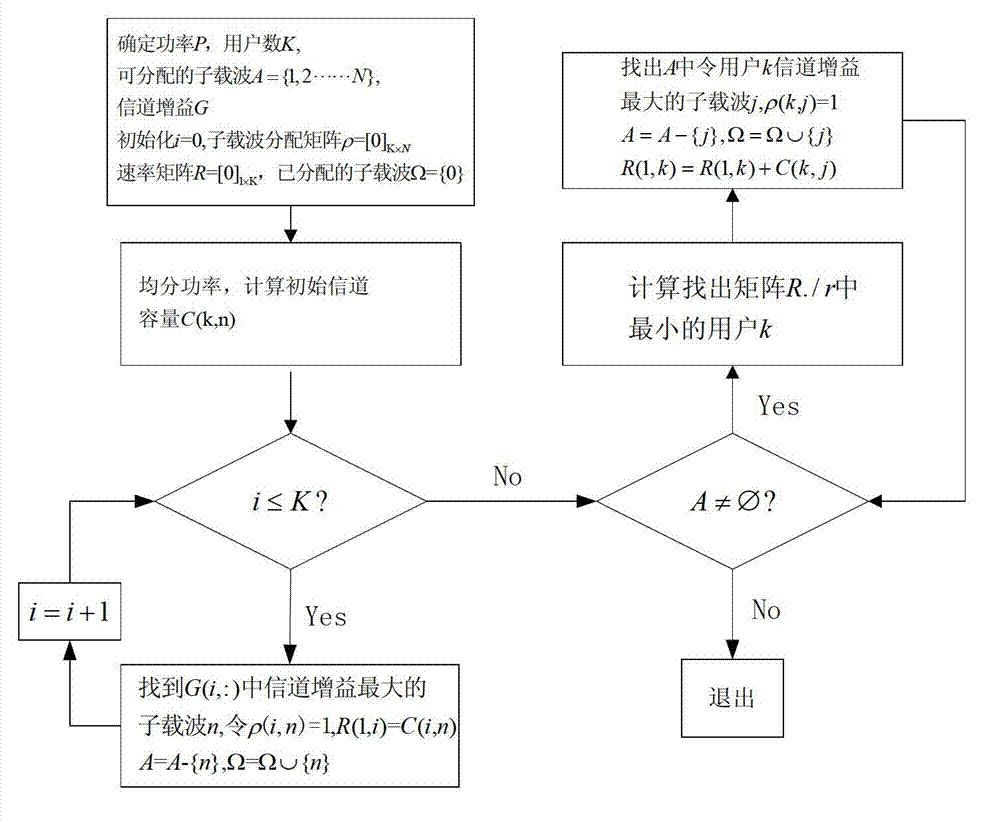Resource distribution method of multi-user OFDM (Orthogonal Frequency Division Multiplexing) system
A system resource and allocation method technology, applied in multi-frequency code system, wireless communication, electrical components, etc., can solve problems such as huge calculation amount, no consideration of user needs, and inapplicability, so as to reduce bit error rate and improve throughput Quantity and spectral efficiency, the effect of increasing the total rate
- Summary
- Abstract
- Description
- Claims
- Application Information
AI Technical Summary
Problems solved by technology
Method used
Image
Examples
Embodiment Construction
[0045] The specific implementation manners of the present invention will be further described in detail below in conjunction with the accompanying drawings and embodiments. The following examples are used to illustrate the present invention, but are not intended to limit the scope of the present invention.
[0046] figure 1 It is a flowchart of the present invention, and the present invention comprises the following steps:
[0047] S1: Obtain the user channel gain, and set the rate ratio constraint matrix between each user;
[0048] The rate ratio constraint matrix is the ratio relationship matrix between user rates; in this paper, the first user is used as the default by default, and the rate of other users is how many times its rate. For example, assuming that the rates of four users are 50bps, 100bps, 150bps, and 200bps respectively, the rate constraint ratio constraint matrix should be [1,2,3,4].
[0049] S2: Allocate subcarriers to users according to the rate ratio c...
PUM
 Login to View More
Login to View More Abstract
Description
Claims
Application Information
 Login to View More
Login to View More - R&D
- Intellectual Property
- Life Sciences
- Materials
- Tech Scout
- Unparalleled Data Quality
- Higher Quality Content
- 60% Fewer Hallucinations
Browse by: Latest US Patents, China's latest patents, Technical Efficacy Thesaurus, Application Domain, Technology Topic, Popular Technical Reports.
© 2025 PatSnap. All rights reserved.Legal|Privacy policy|Modern Slavery Act Transparency Statement|Sitemap|About US| Contact US: help@patsnap.com



